
Skippers are a group of butterflies placed in the family Hesperiidae within the order Lepidoptera. They were previously placed in a separate superfamily, Hesperioidea; however, the most recent taxonomy places the family in the superfamily Papilionoidea, the butterflies. They are named for their quick, darting flight habits. Most have their antenna tips modified into narrow, hook-like projections. Moreover, skippers mostly have an absence of wing-coupling structure available in most moths. More than 3500 species of skippers are recognized, and they occur worldwide, but with the greatest diversity in the Neotropical regions of Central and South America.
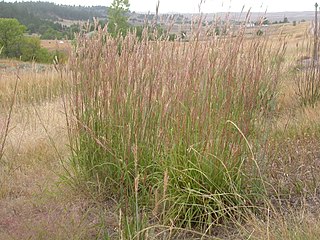
Andropogon gerardi, commonly known as big bluestem, is a species of tall grass native to much of the Great Plains and grassland regions of central and eastern North America. It is also known as tall bluestem, bluejoint, and turkeyfoot.

Grass skippers or banded skippers are butterflies of the subfamily Hesperiinae, part of the skipper family, Hesperiidae. The subfamily was established by Pierre André Latreille in 1809.

Pyrgus is a genus in the skippers butterfly family, Hesperiidae, known as the grizzled skippers. The name "checkered" or "chequered skipper" may also be applied to some species, but also refers to species in the genera Burnsius and Carterocephalus. They occur in the Holarctic with an additional group of species extending to the Neotropic.

Cathedral Provincial Park and Protected Area, usually known as Cathedral Provincial Park and also as Cathedral Park, is a provincial park in British Columbia, Canada. It is located east of E.C. Manning Provincial Park, south of BC Highway 3, and southeast of the town of Princeton, and southwest of Keremeos. Its southern boundary is the border with the United States. Much of the park is the basin of the Ashnola River. Cathedral Park is home to teal sub-alpine lakes, vast ridges and jarred peaks, old-growth forests, and rock formations of siltstone, granodiorite, and basalt. Hikers can scramble along various peaks such as the 8000-foot Grimface Mountain and Lakeview Mountain. Tourists flock to Smokey the Bear and Stone City because of their unique formations with incredible views formed by millennia of erosion, volcanic and tectonic activity, and glacial recession.

Pyrgus ruralis lagunae, the Laguna Mountains skipper, is a butterfly of the family Hesperiidae. It is a subspecies of Pyrgus ruralis.

Festuca idahoensis is a species of grass known by the common names Idaho fescue and blue bunchgrass. It is native to western North America, where it is widespread and common. It can be found in many ecosystems, from shady forests to open plains grasslands.
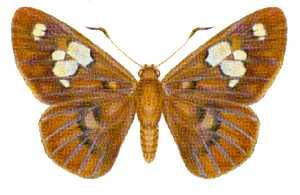
Chaetocneme is genus of skipper butterflies in the family Hesperiidae.
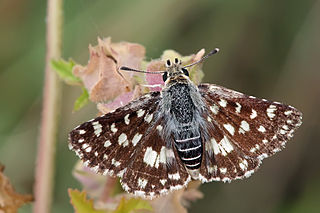
Spialia is a genus of skippers in the family Hesperiidae, which are mainly found in Africa and Asia. They are commonly called grizzled skippers or sandmen.
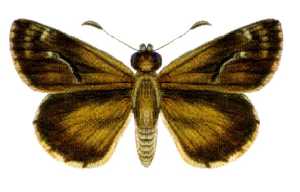
Anisynta dominula, the two-brand grass-skipper or dominula skipper, is a species of butterfly in the family Hesperiidae. It is found in Australia in the mountains of New South Wales, Tasmania and Victoria.
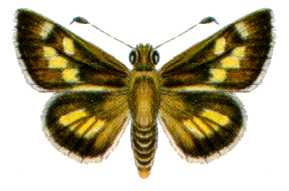
Trapezites luteus, the rare white spot skipper, is a butterfly of the family Hesperiidae. It is found in Australia in the states of New South Wales, Victoria, South Australia and Tasmania.

Hesperilla flavescens, also known as the yellow sedge-skipper or yellowish skipper, is a species of butterfly in the family Hesperiidae. It is found in the Australian states of South Australia and Victoria.

Hesperilla ornata, also known as the spotted skipper or spotted sedge-skipper, is a species of butterfly in the family Hesperiidae. It is found along the non-tropical eastern seaboard of mainland Australia and in the adjacent mountain ranges.
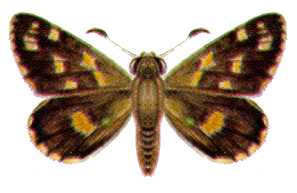
Hesperilla munionga, the alpine sedge-skipper, is a butterfly of the family Hesperiidae. It is found in the Australian Capital Territory, New South Wales, Tasmania and Victoria.
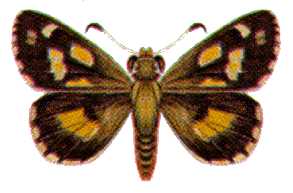
Hesperilla perornata, the montane sedge-skipper or mountain spotted skipper, is a butterfly of the family Hesperiidae. It is found in the mountains of the Australian states of New South Wales and Victoria.
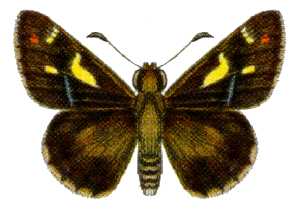
Toxidia doubledayi, the Doubleday's skipper or lilac grass-skipper, is a butterfly of the family Hesperiidae. It is found in the mountains and on the coastal plain of the east coast of Australia, including New South Wales and Queensland.
Bald Knob is a rural locality in the Sunshine Coast Region, Queensland, Australia. In the 2021 census, Bald Knob had a population of 280 people.
















